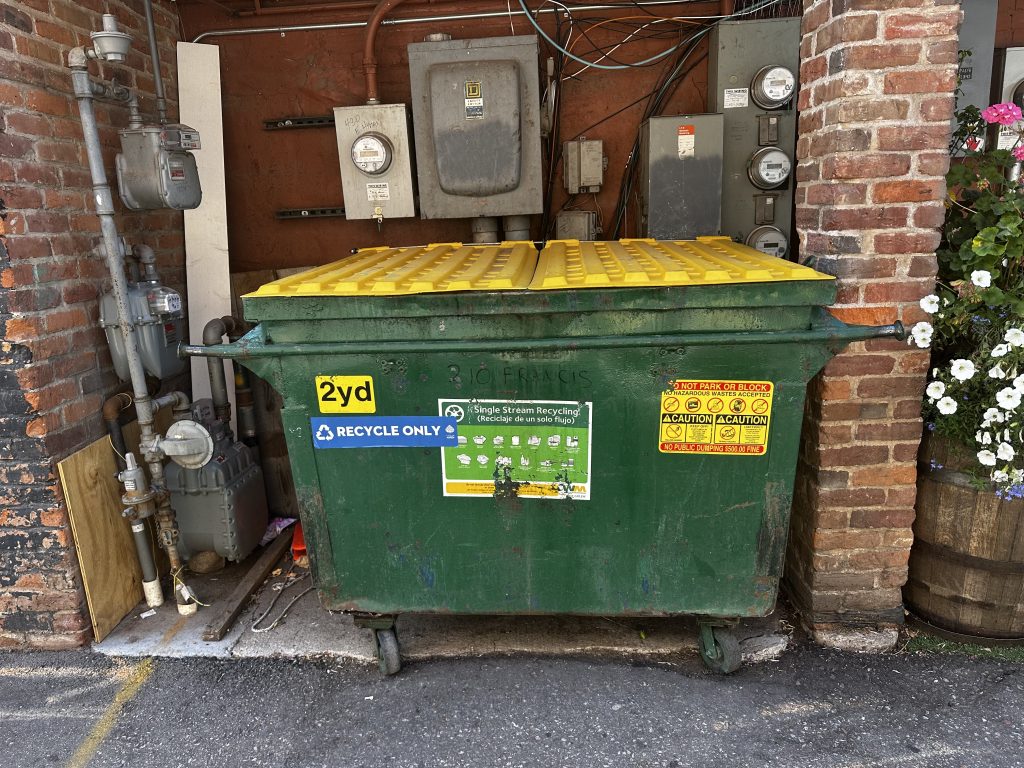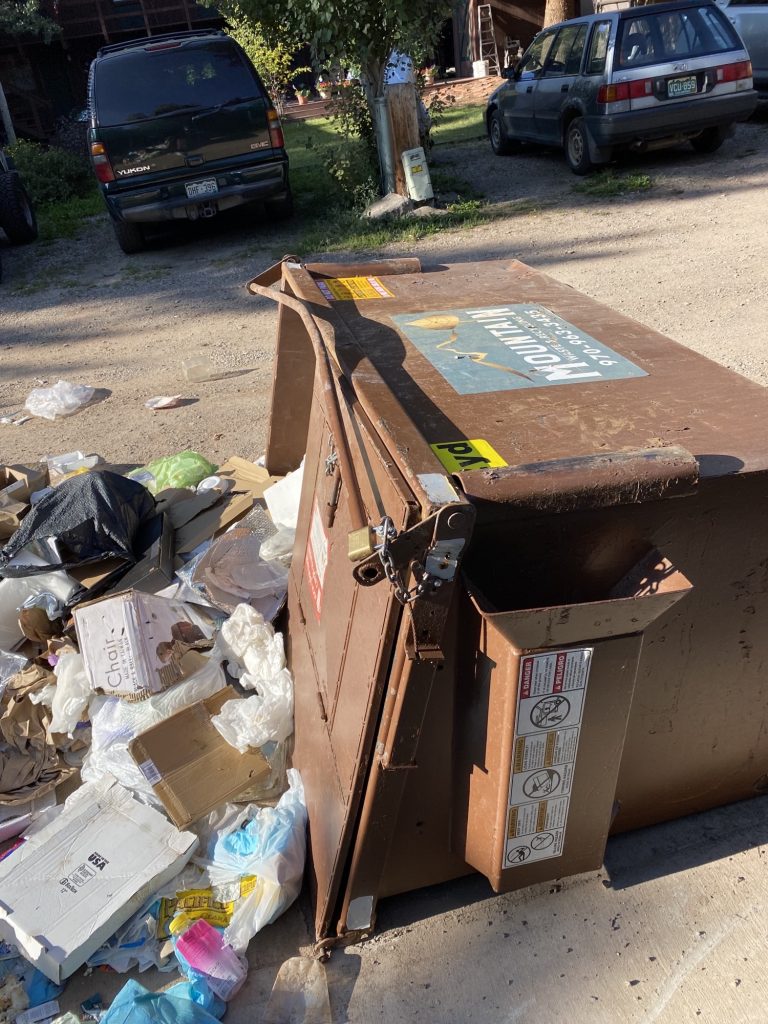Recycling poses one of Aspen’s biggest bear problems
Concerns around attractants, compliance increases amid bear activity

River Stingray/The Aspen Times
As bear incidents have been increasing over the past couple months, it’s not just trash that is acting as an attractant.
Recently, recycling bins have been posing a bigger challenge to mitigation and management. In July, Aspen saw 14 intrusions into unlatched trash, five container failures, and 16 recycling intrusions.
“Most of the intrusions are into recycling — not required to be ‘secured,'” Lara Xaiz, wildlife coordinator for the city of Aspen, said. “Recycling is exempted from being an attractant.”
July’s data is part of a broader June/July period this year that saw 61 total intrusions, compared to 41 in 2024.
Xaiz suggested that as more trash containers are becoming compliant with city codes, meaning they’re latched and bear-resistant, people might be getting lazy with their waste.
“As more things get locked down, a recycling bin is really easy to pop the lid and toss your bag of trash,” Xaiz pointed out.
Contaminated recycling like pizza boxes or to-go containers, which shouldn’t actually be recycled, are also part of the problem attracting bears to these bins. Or, as Roaring Fork Valley Bear Coalition Founder Daniela Kohl noted, it could be correctly recycled items that weren’t properly cleaned, like a bottle with liquid left in it.
“Anything with a smell does attract a bear,” Kohl said. “The bears are ever evolving and have such powerful noses. If they’re hovering around town and the food trash is all secured, latched, in metal bins and locked, they’ll try (recycling bins) because they’re there. They don’t leave any stone unturned or any bin unchecked.”

And bear activity is continuing to increase this month.
“Right now we are getting lots of reports of people seeing bears in general,” Xaiz said. “The past couple weeks, it’s started to ramp up.”
Kohl has also seen this to be true for the greater Roaring Fork Valley.
“There’s been a lot of bear activity, bear sightings, bears hanging around and going through backyards,” she said of recent weeks.
Within the Roaring Fork Valley area, an early service berry crop has played a role in driving increased bear activity in towns, according to Colorado Parks and Wildlife, now that the natural food source is running out.
“I’m concerned we’re going to have another year like last year because they’re gearing up for the winter soon and probably have to start consuming a lot of food now,” Kohl said. “I’m worried some people still don’t take it that seriously. Everything should be bear resistant.”
Sunrise Rundown: Headlines. Breaking News. Local Updates.
Get your essential news every weekday from The Aspen Times—start your day informed.
Sign up for the Sunrise Rundown at AspenTimes.com/newsletter
Xaiz noted the city of Aspen is currently discussing offering incentives for recycling enclosures, which act much like trash enclosures. Enclosures have consistently been the most effective against bears, according to Xaiz.
“It’s better for us, and it’s better for them,” Xaiz said of enclosures. “I hate to say it, but it’s probably always going to be a problem … I try to go by how have we impacted human behavior, and that’s where the compliance piece comes in.”
Residents and visitors alike are also asked to leash dogs, make sure trash containers are secure, and to keep car doors locked and windows shut.
Anderson Ranch announces fall lecture schedule highlighting LA fire-impacted artists
Anderson Ranch Art Center’s public lecture series with artists and critics will run Oct. 8 through Dec. 16 in Snowmass, featuring artists who were all impacted by the Los Angeles fires.
Sexual assault case dismissed for Klaus Obermeyer Jr.
A United States District Judge on Sept. 5 dismissed a case alleging Klaus Obermeyer Jr., son of Aspen icon Klaus Obermeyer, sexually assaulted a woman in New York over two decades ago.










